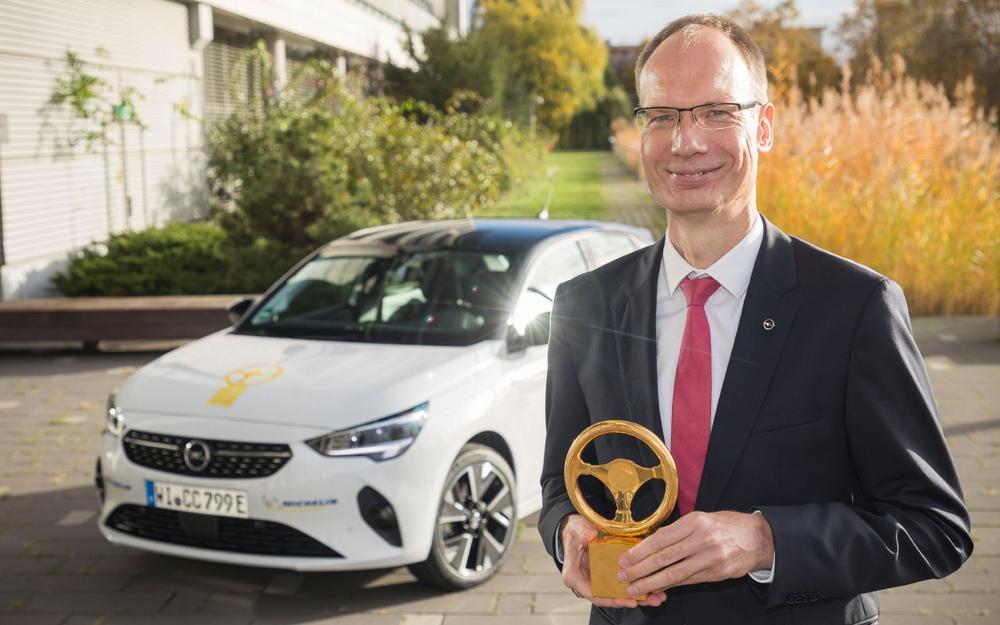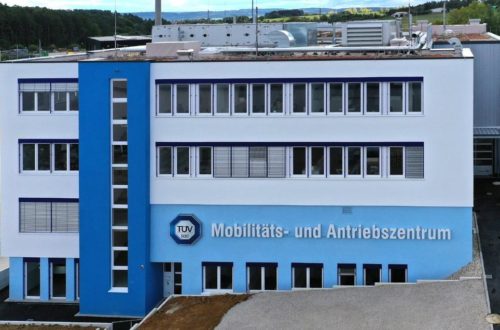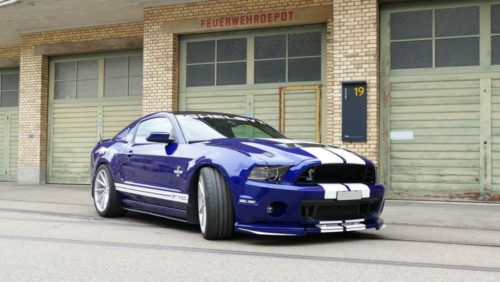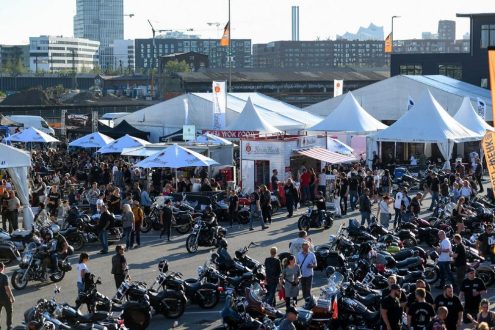
Electrifying: New Opel Corsa-e Wins „Golden Steering Wheel 2020“
- Best small car: all-electric Corsa-e succeeds against strong competition
- Serial winner: Corsa already “Best Buy Car of Europe” and “Company Car of the Year”
- Long tradition: Corsa-e is Opel’s 18th “Golden Steering Wheel” winner
The new Opel Corsa continues its winning ways and has now claimed one of the most important awards in the German automobile industry – the “Golden Steering Wheel 2020”. The all-electric Corsa-e received the award today. The Corsa-e clearly defeated tough rivals to take the first prize in the small car category. Germany’s best-selling small car is as electrifying for the experts and readers of Auto Bild and Bild am Sonntag as for customers.
“Opel is electric”, says Opel CEO, Michael Lohscheller, “and our new Opel Corsa-e is the best proof. It shows that an electric car today can be not only dynamic and practical, but also affordable for all. We are proud of the way the Corsa-e convinces everyone: our customers, the readers of Auto Bild and Bild am Sonntag, as well as the expert jury and celebrities.”
As usual, the winners had to clear two hurdles on the way victory. First, the readers of Auto Bild and Bild am Sonntag elected their three favourites in each category for the final. A jury of journalists, racing drivers and car experts then tested each finalist on the DEKRA-Lausitzring racetrack, using criteria based on the Auto Bild test method. With a total of 3,218 points, the new Opel Corsa-e ultimately overcame strong “small car” competition from the Hyundai i20 in second and the VW e-Up in third, with an advantage of 141 and 431 points respectively.
Opel Corsa-e: electric mobility in its finest form
With 100kW (136hp) and 260 Newton metres of torque from the first squeeze of the accelerator, the Corsa-e offers state-of-the-art electric mobility. With a range of up to 337 km according to the WLTP1 cycle, the agile five-seater is suitable for every-day use. Using 100kW DC, the 50 kWh battery can be fast-charged to up to 80 per cent state-of-charge in 30 minutes. The Corsa-e is ready for all charging options – via wall box, high-speed charging or cable for household sockets.
The entry level Corsa-e already offers automatic climate control with remote control, electric parking brake and keyless start, the Apple CarPlay and Android Auto compatible Multimedia Radio with 7-inch colour touchscreen, OpelConnect Services and a digital cockpit. Systems such as forward collision alert with automatic emergency braking and pedestrian detection, lane keep assist, traffic sign recognition and intelligent cruise control are also included at no extra cost.
Current Corsa generation: best-selling small car
The “Golden Steering Wheel” now takes pride of place in the new Corsa’s trophy cabinet. The AUTOBEST jury already named the best-selling small car the “Best Buy Car of Europe 2020”. In Germany, the Corsa won the compact category of “Company Car of the Year”. Auto Bild and Computer Bild presented the “Connected Car Award 2019” to the new Opel model. The Corsa-e is Opel’s 18th winner of the “Golden Steering Wheel”, continuing a long tradition.
1978 – Opel Senator A: The first “Golden Steering Wheel”
In 1978, the brand with the Blitz won its first “Golden Steering Wheel” with the Opel Senator. Presented at the IAA in September 1977, the Senator was the successor of the legendary Kapitän, Admiral and Diplomat models and was Opel’s flagship until making its final bow in 1993. The 1978 Senator was available with three different engines – a 2.8-litre engine with 103 kW/140 hp, a 3.0-litre unit with 110 kW/150 hp and the top-of-the-range 3.0-litre engine with 132 kW/180 hp.
1979 – Opel Kadett D: The award-winning space wonder
One year later, Opel was back on the top of the rostrum. The 1979 Kadett D was the first ever Opel compact class car with front-wheel drive and delivered the company’s second “Golden Steering Wheel”. Thanks to the transverse engines and a missing flexible drive shaft it offered the passengers ample space despite compact dimensions and being 126 mm shorter than its predecessor. In addition, the Kadett saw the introduction of new engines with an overhead camshaft. The four-cylinder 1.3-litre OHC engine generated 44 kW/60 hp or 55 kW/75 hp. In addition to the spacious estate with a load volume of up to 1,425 litres, Opel offered two different fastback versions. In January 1983, the sporty Kadett GTE followed, with a top speed of 187 km/h and equipped with a 1.8-litre four-cylinder engine that developed 115 hp.
1981 – Opel Ascona C: Good things come in threes
In 1981, it was the Opel Ascona C’s turn to bring home the goods for the Rüsselsheim-based carmaker. It was the first Opel middle class car with front-wheel drive and was available as a notchback and an estate. The powertrain range for the Ascona C consisted of petrol engines ranging from 1.3 to 1.6 litres and a 1.6-litre diesel unit.
1982 – Opel Corsa A: Small car, huge impact
Only 12 months later, in 1982, a brand-new Opel model took the “Golden Steering Wheel” awards by storm – the Corsa A. Opel’s first-ever small car featured close-coupled proportions within a short length of just 3.62 metres. It had bold, flared wheel-arches like a rally car and an exceptionally low drag coefficient of 0.36, which was possibly record-breaking for its class. The Corsa A was designed to appeal to ‘the man of the house’ in particular. The highlight was the 72 kW/98 hp Corsa GSi. The two-door hatch and notchback line-up was expanded in 1985 with the addition of the popular five-door model. The Corsa A became a highly acclaimed top seller with 3.1 million units built.
1984 – Opel Kadett E: Another compact class winner
Five years after winning the “Golden Steering Wheel” for the first time, the Kadett took pole position again with its new generation launched in 1984. The second front-wheel drive Kadett, built from 1984 to 1991, was an absolute winner and also took the 1984 “Car of the Year” award. Furthermore, the Kadett is rated as an aerodynamics champion. The sporty GSi, with a Cd of 0.30, stunned the experts and even the normal hatchback sedan achieved a sensational value of 0.32. In total, the aerodynamics champion was sold 3.78 million times.
1987 – Opel Senator B: In for a penny, in for a pound
The Opel Senator B also managed to repeat the success of its predecessor. Based on the rear-wheel drive Opel Omega, the new flagship mainly came with six-cylinder engines, with the smooth 3-litre in-line engine with 115 kW/156 hp leading the way. You could place a coin on its edge in the engine compartment and the coin wouldn’t fall off when the engine was running. Later, a 4-valve version of the 6-cylinder engine with a Dual-Ram variable intake system and hearty 150 kW/204 hp was introduced.
1990 – Opel Calibra: The athlete shines
A true champion won the “Golden Steering Wheel” in 1990: A breath-taking coupé with a record-breaking drag coefficient of 0.26! The Calibra was available with powerful engines ranging from 85 kW/115 hp to 150 kW/204 hp. The Opel Calibra Turbo with all-wheel drive and acceleration from 0 to 100 km/h in a mere 6.8 seconds was the icing on the cake. A V6 engine with 125 kW/170 hp rounded off the offer. In motorsports, a Calibra V6 won the touring car crown by taking the ITC in 1996.
1994 – Opel Omega B: The big car takes gold
The second edition of the Omega left a special impression on the jury. The dynamic design, the extensive amount of space and the new V6 engines with alloy cylinder heads and up to 155 kW/210 hp impressed the experts. The new airbag systems ensured a high level of safety for all occupants. The estate version boasted sheer endless loading capacity, making it the ideal car for families and artisans alike, whereas the notchback version was rated as a representative business sedan.
1995 – Opel Vectra B: Mirror, mirror, on the door
The Opel Vectra’s most eye-catching feature was the aerodynamically shaped door mirrors that formed a harmonic unity with the front of the car – a feature the “Golden Steering Wheel” jury simply could not resist. The Vectra also won because of its new and efficient petrol engines ranging from 1.6 to 2.6 litres featuring outputs between 55 kW/75 hp and 125 kW/170 hp. Elsewhere, the direct injection diesel engines with displacements ranging from 1.7 to 2.2 litres delivering exemplary consumption celebrated their debut.
1999 – Opel Zafira A: The quick-change artist with seven seats
Who invented it? Opel! Yes, the compact van that can be turned from a complete seven-seater into a transporter with impressive maximum load volume (1,700 litres max.) in a flash (in only 15 seconds!) without removing a single seat is a Rüsselsheim brainchild. The formula is called Flex7 and it helped the Zafira win the “Golden Steering Wheel” in 1999. Thanks to the ingenious concept, the seats disappear into the vehicle floor when necessary. The flexible space wonder also impresses with compact dimensions and outstanding driving dynamics.
2002 – Opel Vectra C: The master electrician
The third-generation Vectra successfully defended the title won by its predecessor by winning gold yet again. The new middle class car entered the electronic age, connected its systems via a CAN (Controller Area Network) bus instead of via a cable harness, and came with electrohydraulic power steering. Outputs of the petrol and diesel engines ranged from 74 kW/100 hp to 206 kW/280 hp with displacements from 1.6 to 3.2 litres. In 2004, Opel also fitted the Vectra with the IDS Plus active suspension with Continuous Damping Control (CDC), which ensured that the dampers adapt to the prevailing driving situation.
2005 – Opel Zafira B: Completing the golden dozen
The second-generation Zafira continued to set the standards with a further development of the Flex7 seating system and won the “Golden Steering Wheel” again. Furthermore, it was also classed as the fastest van on the planet when the OPC version with 177 kW/240 hp completed a lap on the Nürburgring Nordschleife in 8:54:38 minutes. 240 powerful horses under the bonnet and an outstanding performance handling system helped achieve this record-breaking time.
2009 – Opel Astra J: The compact designer piece
In 2009, the Astra J, a true designer piece, followed in the footsteps of the Kadett D space wonder and the Kadett E aerodynamics champion, securing Opel’s third “Golden Steering Wheel” compact class title. The Astra followed Opel’s new design philosophy ‘Sculptural artistry meets German precision’. In additional, the Astra J came with modern assistance systems such as the Opel Eye and the AFL+ headlamp system that can see around corners. The FlexRide adaptive technology helped it adapt to the prevailing driving situation and front-seat occupants were able to enjoy the ride in AGR-certified (Campaign for Healthier Backs) seats.
2010 – Opel Meriva B: So clever, so compact, so golden
The Zafira’s little brother struck gold in 2012 with the Meriva B underlining Opel’s van expertise. The jury was convinced by the versatile FlexSpace rear-seating system and the innovative rear-hinged rear door system. The FlexDoors allow easy access to children’s seats in the rear and ensured comfortable entry and egress for tall passengers. The engine portfolio offered ample power while curbing consumption thanks to downsizing and turbo-charging. Outputs ranged from 55 kW/75 hp to 103 kW/140 hp.
2012 – Opel Zafira Tourer: The lounge on wheels
The Zafira was accompanied by a premium partner in the Zafira Tourer and immediately won another “Golden Steering Wheel”. In addition to the flexible interior, the new star impresses with lounge comfort, panorama glass sunroof and innovations such as radar-based speed control and emphatic Forward Collision Alert.
2015 – Opel Astra K: The quantum leap
And the winner is: The current-generation Astra is based on a completely new lightweight vehicle architecture, is powered exclusively by ultra-modern engines and enables outstanding connectivity via smartphone integration and the personal connectivity and service assistant OnStar. The Astra also continues Opel’s tradition of introducing features previously only known from higher segments into the compact segment. All this resulted in the 2015 “Golden Steering Wheel”.
2017 – Opel Ampera-e: The electric range champion
The Opel Ampera-e leaves its competition standing with its sports car-like acceleration and the by far longest electric range in its segment. With a single charge of the 60 kWh lithium-ion battery a distance of up to 520 kilometres is measured in accordance with the New European Driving Cycle (NEDC). And the Opel Ampera-e also impresses when tested approximated to the speed profile defined in the WLTP (Worldwide Harmonized Light-Duty Vehicles Test Procedure) driving cycle (shortened test procedure): Based on this development test, the engineers estimate a combined WLTP range of 380 kilometres. The Ampera-e accelerates from 0 to 50 km/h in just 3.2 seconds. Furthermore, the 4.16 metre-long Ampera-e also offers plenty of space for up to five passengers plus boot space of 381 litres (1,274 litres when the seats are folded down) – a mixture worth its weight in gold.
2020 – Opel Corsa-e: Electrified bestseller
With the sixth generation of the Corsa the best-selling small car has become electric. Thanks to the 50kWh battery, the Corsa-e can travel up to 337 kilometres on a single charge (according to the WLTP1 cycle) and is therefore suitable for everyday use. There is space for up to five occupants and the entry-level version already features numerous high-tech assistance systems. All at attractive prices starting at around €20,000 (in Germany, including incentives). Opel makes electric mobility affordable.
[1] Range determined according to WLTP test procedure methodology (R (EC) No. 715/2007, R (EU) No. 2017/1151). The actual range can vary under everyday conditions and depends on various factors, in particular on personal driving style, route characteristics, outside temperature, use of heating and air conditioning and thermal preconditioning.
Opel Automobile GmbH
Bahnhofsplatz
65423 Rüsselsheim
Telefon: +49 (6142) 7-70
Telefax: +49 (6142) 77-8409
http://de-media.opel.com/de
Group Manager International Product Communications
Telefon: +49 (6142) 69-21574
E-Mail: martin.golka@opel.com
Manager International Product Communications
Telefon: +49 (6142) 69-22084
E-Mail: colin.yong@opel.com
![]()




